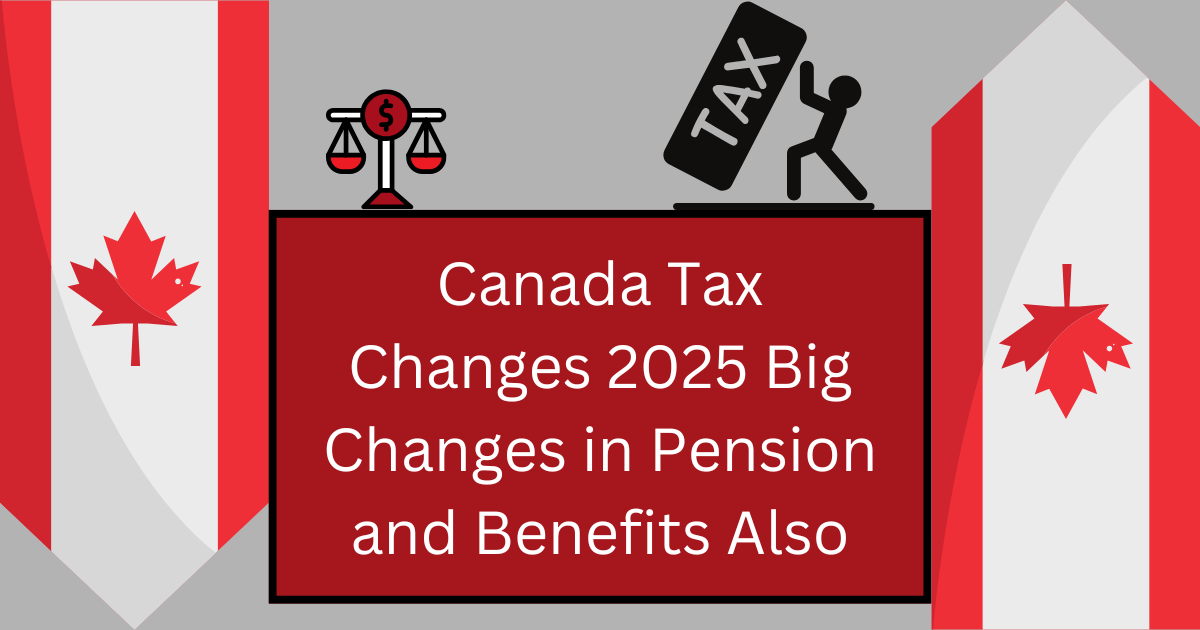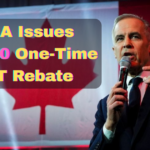In 2025, Canadians will be able to see the big updated tax changes in Canada that will affect most of the population. The given below article is about the Canada Tax Changes 2025. The changes have been made in the following:
- Income tax brackets
- Basic Personal Amount (BPA)
- Canada Pension Plan (CPP)
- Tax-free Savings Account (TFSA)
- Registered Retirement Savings Plan (RRSP)
- Old Age Security (OAS)
- Employment Insurance (EI) premiums
- First Home Savings Account (FHSA)
- GST/HST Updates
Canada Tax Changes 2025
There will be many changes in Canada tax, pensions, and other benefits. The reason for changes may vary by different situations. To get detailed knowledge about the tax changes in Canada, go through the given below article.

Income Tax Brackets
There is a different tax rate for each tax bracket depending on your income level. The inflation rate is used by the Canada Revenue Agency to adject the personal income tax and benefit rates every year. There will be a significant change in the federal tax bracket in Canada this year.
| 2025 Income Tax Bracket | Tax Rate |
| Up to $53,359 | 15% |
| $53,360 to $106,717 | 20.5% |
| $106,718 to $165,430 | 26% |
| $165,431 to $235,675 | 29% |
| Over $235,676 | 33% |
Basic Personal Amount (BPA)
The Basic Personal Amount (BPA) is an untaxed and non-refundable tax credit that can be claimed by all Canadian taxpayers. This credit helps by reducing the tax burden on citizens with low income by guaranteeing they pay no federal tax on a selected minimum amount of their earnings. The BPA has increased to $16,129 in 2025, up from $15,705 in 2024.
Canada Pension Plan (CPP)
There will be an increase in maximum and average payments of the Canada Pension Plan. The CPP will increase the benefits by 4.4% in 2025. Starting April 2025, the monthly payment amounts for the Canada Pension Plan (CPP) will be adjusted:
Maximum monthly CPP payment: will increase to $1,406.10 up from $1,364.60 in 2024.
Average monthly CPP payment: will rise to approximately $787.50, reflecting an increase from the previous year.
Tax-free Savings Account (TFSA)
The contribution limit for 2025 remains unchanged at $7,000. The unused contribution room from previous years can be carried over. For individuals who have been eligible since 2009, the total cumulative limit is now $102,000. Income earned within a TFSA, including interest and investment gains, is not subject to taxation. Moreover, withdrawals from a TFSA are also tax-free. It is important that the contributions are made using after-tax funds, meaning there is no tax deduction possible for these contributions.
Registered Retirement Savings Plan (RRSP)
The Canada Revenue Agency has released an update to Information Circular IC72-22R10, which pertains to Registered Retirement Savings Plans (RRSPs). The maximum RRSP contribution limit has risen to $32,490 for 2025. The adjustment is especially beneficial for higher-income earners, as the increased limit allows them to shield more of their income from immediate taxation, which enhances long-term wealth-building. Every dollar you contribute to a RRSP reduces your taxable income by a dollar.
Old Age Security (OAS)
The Canada Revenue Agency (CRA) has announced an increase in OAS benefits starting in November 2024. This change ensures that payments keep pace with inflation and the growing cost of living.
The benefits you’ll get in Old Age Security (OAS) determine how many years you have stayed as a resident in Canada after turning 18. Due to a 1.3% increase in benefits this year, the maximum monthly OAS payment is $727.67 for individuals aged 65 to 74 years and $800.44 for those aged 75 and older.
Employment Insurance (EI) premiums
Employment Insurance premiums are calculated at a rate of 1.64% of your annual income, up to a cap of $65,700 in 2025. The most you can pay in EI premiums this year is $1,077.48.
First Home Savings Account (FHSA)
The First Home Savings Account (FHSA) is spefically designed to assist Canadians in saving for their first home purchase. The investment growth within the account is tax free, and withdrawls remain tax-free as long as they are used for buying your first home.
For 2025, the rules for the FHSA will remain unchanged:
- Lifetime contribution cap: $40,000
- Annual contribution cap: $8,000
GST/HST Updates
The goods and services tax/harmonised sales tax (GST/HST) credit is a quarterly tac-free payment to assist individuals and families with low to modest incomes to offset the GST or HST they pay. When you file your taxes, you are automatically considered eligible for the GST/HST credit.
If you have filed your tax return for 2023, you could get a rebate in between July 2024 and June 2025.
- $529 if you’re single
- $680 if you are married/have a common-law partner
- $179 for each child under 19 years
FAQs
By what rate the Canada Pension Plan payments will increase?
The CPP will increase the benefits by 4.4% in 2025.
What will be the maximum OAS payment in 2025?
The maximum monthly OAS payment is $727.67 for individuals aged 65 to 74 years and $800.44 for those aged 75 and older.
What is FHSA?
The First Home Savings Account (FHSA) is spefically designed to assist Canadians in saving for their first home purchase.


